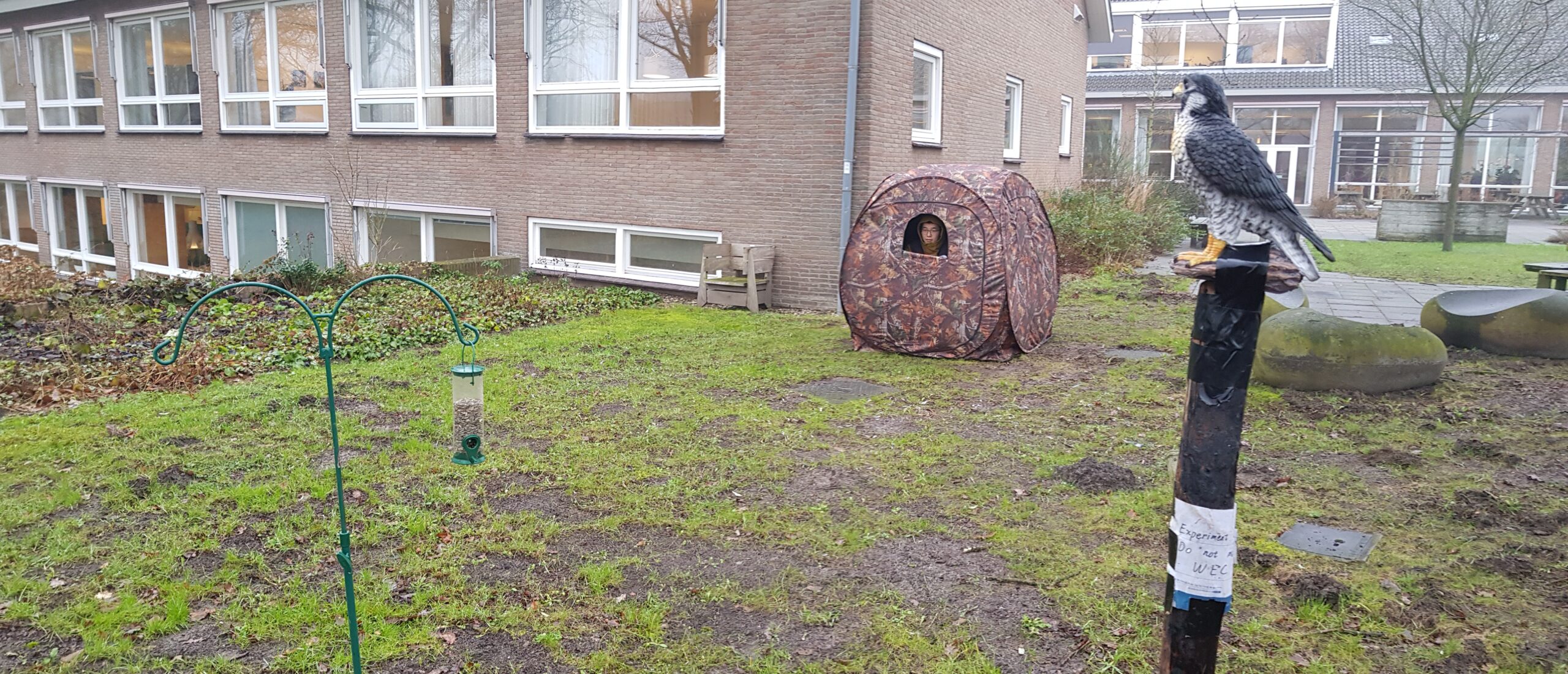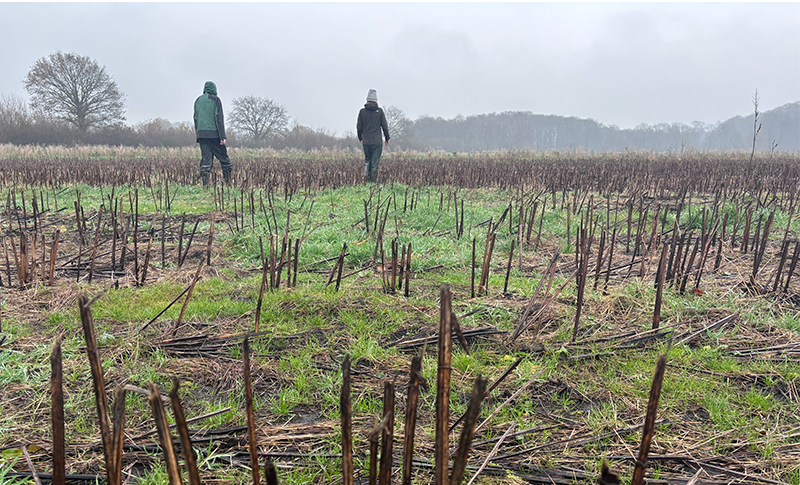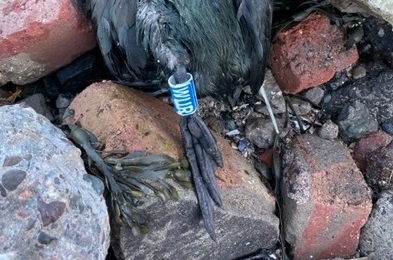No, Chinese master student Huanzhi Gong is not a protestor. Nor is he an illegal fisher. Hidden in his camouflage print dome tent, he is working on his master’s thesis. He is doing fieldwork. Gong has been spying on great tits and Eurasian blue tits for several months, to see whether they will use his feeder and whether they are wary of a predator nearby.
This Thursday, he has set up camp on the corner near Impulse. His standard set-up consists of his tent, with a feeder attached to a pole ten metres in front of the tent. And with or without a predator in the vicinity. Today, the predator is a sparrowhawk. Not a real one, but a dummy on a post. Gong also uses a dummy cat as an alternative. He conducts his thesis study at the behest of Wildlife Ecology & Nature Conservation.
Grab a seed
Gong has been setting up his tent from Monday till Thursday in locations where many great tits and Eurasian blue tits are found since the start of November. The garden near Lumen is a location favoured by the birds, he says. ‘I count as many as a hundred visits per hour there. They come, grab a seed and take off again. Sometimes, they stay a while. The frequency varies depending on the location on the campus.’
My initial estimate is that there is little difference.
Huanzhi Gong, masterstudent Wildlife Ecology & Nature Conservation
A similar experiment is conducted simultaneously, investigating whether the birds use nesting boxes as a nocturnal shelter. Here, too, dummies of a sparrowhawk and cat are deployed. In this case, however, Gong need not observe, the results are derived from the faeces left behind on a piece of white paper in the nesting boxes. There are some one hundred such nesting boxes across the campus.
Faint-hearted
Fieldwork in the winter is not for the faint-hearted. The tent offers little protection from the cold. Gong is securely wrapped in his winter coat. Still, this is the perfect season for his study, he explains. ‘In the summer, there is an abundance of food, and birds will not come to the feeder frequently. In the winter, however, temperatures are low, causing them to use much energy to keep themselves warm, so they are eager to visit the feeder.’
How they react to the sparrowhawk and cat is difficult to say. Gong: ‘I haven’t analysed the data yet. My initial estimate is that there is little difference. That could be due to multiple reasons, two of which might be that the birds are inherently brave, or they recognise the dummies as being dummies.’

 Photo Resource
Photo Resource 

